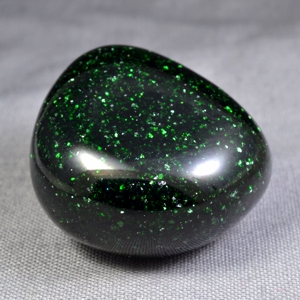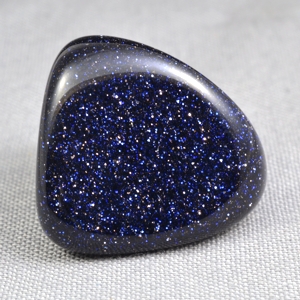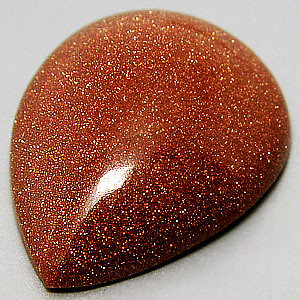Goldstone (gemstone)
Gold River (also Aventuringlas Goldstein ) is a synthetic glass that is often used as decoration material. It is not, as often stated in the sale, a natural mineral.
Goldstone is a glass with a copper or copper ( I) oxide is formed in a reducing flame. In a normal oxidative environment, the copper would react with the silicon of the glass and form a blue - green glass, in the reducing environment, however, the copper remains isolated as atoms and forms small crystalline clusters. The finished product can be polished, ground or poured into molds and is often similar to a gemstone for fashion jewelry and used in esoteric artifacts. It is often used as a substitute for natural Aventurine ( Green Aventurine Quartz and Green Aventurine feldspar ).
The most common form has a reddish- brown appearance, the color comes from the embedded copper crystals, while the glass itself is colorless. Variants with colored glass - usually blue to purple, rare green - are manufactured under the name of Blue River and Green River.
History
The manufacturing process for goldstone was discovered in Venice in the 17th century by the family Miotto, which was awarded the exclusive right to manufacture by the Doge of Venice. Other, unused traditions speak to the discovery of an unspecified Italian monastic order.
For a long time the center of production was at Murano Venice, but the manufacturing process after the re- discovery by Max von Pettenkofer was followed in the second half of the 19th century by the Bavarian and Bohemian glassworks.
Green Aventuringlas was first produced in 1865 by the French chemist Théophile -Jules Pelouze and since then processed in increasing amounts in French factories for fashion jewelery. In this form of the copper is replaced by chromium.
The original Italian name avventurina was named for the 18th century discovered in the minerals aventurine quartz and aventurine - feldspar.

.jpg)








